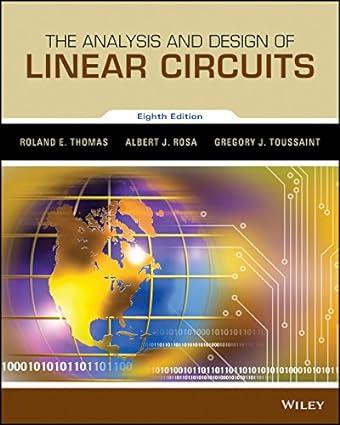The Fourier series serves as an introduction to the concept that a signal can be described by
Question:
The Fourier series serves as an introduction to the concept that a signal can be described by a spectrum that gives the distribution of amplitudes (and sometimes phases) of the sinusoidal components in a waveform. Radio, television, cell phones, satellite communication, and radar systems must confine their signal spectra to an allocated portion of the available electromagnetic spectrum. Spectral allocations are regulated by various governmental agencies since there are many potential users and a limited spectral resource. As a result, users must design their systems to operate within specified spectral limitations.
These limitations are often specified using the concept of signal bandwidth, defined as the frequency interval outside of which the amplitude spectrum is less than some specified value. Accordingly, signal bandwidth (B) can be quantified by the expression B = fU − fL where fU and fL are the upper and lower limits on the bandwidth interval. Bandwidth is a partial signal descriptor that places an upper bound on the spectral content outside of the interval fL < f < fU. Caution: The spectral content inside the interval can be less than this upper bound at some frequencies but must be less at every frequency outside the interval.
For a periodic waveform, the lower frequency bound is fL = f0 when there is no dc component ða0 = 0Þ and is fL = 0 when a0 is not zero. The upper bound is another matter.
In general, the Fourier series is an infinite series, so that in theory its spectral content extends to infinite frequency. However, we have seen the amplitudes of the higher harmonics become negligibly small and make little contribution to the waveform’s energy content. In other words, an acceptable approximation to a periodic waveform is obtained when its Fourier series is terminated at some designated fU = nf0.
One simple way to select nf0 is to compare the amplitudes of the high-frequency harmonics with the amplitude of the largest ac component, usually the fundamental.
Harmonics whose amplitudes are less than a specified fraction (say 5%) of the fundamental are ignored. Applying a 5% criterion to waveforms whose Fourier coefficients decrease as 1=n (square wave, rectangular pulse, and sawtooth wave;
see Figure 13–4) yields fU =20f0. Waveforms whose harmonics fall off as 1=n2 (triangular wave and rectified sine waves) meet a 5% bound at about fU =5f0. Regardless of the criteria used, the basic idea is that signal bandwidth is an important design consideration that in turn influences the bandwidth required in system components.
For example, accurate representation of arterial blood pressure waveforms requires the first eight harmonics of the pressure signal. To get a useful record of the arterial pressure waveform, the bandwidth (in Hz) of a measurement system must be at least eight times the maximum heart rate (in beats/second). Thus, designing a recording system for a maximum heart rate of 180 beats/minute requires a minimum bandwidth of 24 Hz.
Step by Step Answer:

The Analysis And Design Of Linear Circuits
ISBN: 9781119235385
8th Edition
Authors: Roland E. Thomas, Albert J. Rosa, Gregory J. Toussaint





